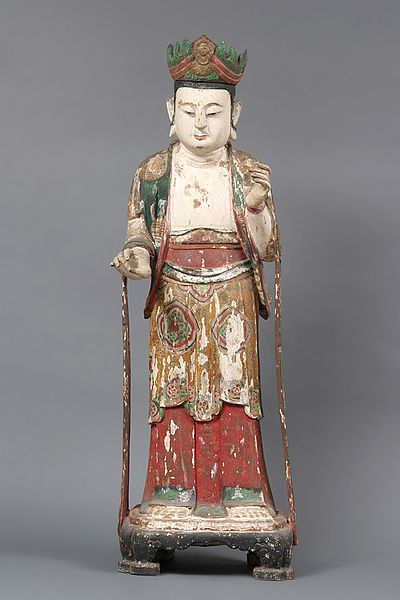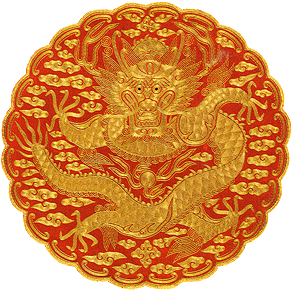
A book newly acquired by the Thammasat University Libraries proves there is more to appreciating Korean culture than just K-pop, romance novels, and fashionable hairstyles.
A much-praised traveling art exhibit last year reminded us that Korea also has a strong tradition in the visual arts. Treasures from Korea: arts and culture of the Joseon Dynasty, 1392-1910 is the lavish catalogue of this exhibit. While the TU Libraries own a number of other books about Korean art, this new book provides a combination of excellent illustrations and up-to-date scholarly research that makes it especially rewarding for the general reader. Treasures from Korea displays the finest art from the Joseon dynasty, twenty-seven rulers who reigned over Korea peninsula for over five hundred years. Painted screens, scrolls, calligraphy, costumes, and ritual items used in Buddhist worship are included, among other things. Showing the Confucian ideal, they represent different levels of society and religious practice. Buddhism had already been practiced in Korea for almost one thousand years when the Joseon dynasty began. Although Confucianism was the dynasty’s official religion, Buddhism remained popular in Korea during these years, even if not sponsored by the rulers of the day.
Court paintings.
The art of painting was important for the Joseon court. Used in ceremonies and to mark historic occasions, screen paintings were used for court rituals. Royal protocols, or illustrated books, preserved images from court events. As in many Asian countries, calligraphy was considered an important art form. King Jeongjo of Korea, who reigned from 1776 to 1800, was particularly skilled in this refined practice. Ceramics and costumes also played a role in the overall artistic expression of the times.

Different levels of society.
In the divisions of Korean society of the time, the nobility was distinctly separated from the middle class, who pursued such professions as doctors or painters to the court. Commoners, mainly farmers, and what was seen as a lower class of people working as butchers or ceramists were placed on a less distinguished rung of the social world. Interestingly, a painter to the court was considered a much higher social position than someone who made pottery, even though today we may admire the products of both art forms.
Ancestor worship.
Following Confucianism, respect for ancestors and parents was a major theme of art of this era. Ceramics and metal objects were specially designed to assist in this form of sacred ritual. Many were created to be put in tombs as a sign of Korean respect for the spirits of ancestors. One of the authors of Treasures from Korea, Hongkyung Kim, a specialist in the history of East Asian and Korean thought and religions, especially Confucianism and Daoism at Stony Brook University, USA, writes that Korean Confucianism was
the most rigid and fundamentalist of all existing Confucian ways of thinking, comparable even to the unyielding principles of the New England Puritans.
This explains why most of the artworks in this book are serious and somber, not colorful and celebratory as some of the Chinese or Japanese art from this same time. 18th-century portraits of Korean scholars include the Bureau of Elder Statesmen, stern old men wearing black robes and hats. Other paintings in the Portrait Album of Successful Candidates of Deungjunsi Military Examination show middle-aged office workers who played extremely important roles in society.

Other themes.
Important symbols for Korean artistic thought of the time included the pine tree, which means long life. The bark of the tree was thought to be like the skin of an old person. Evergreen trees which keep their color in winter represent strength and endurance. One Korean text from the fourth century states that anyone who drinks the resin of a thousand-year-old pine will “live as long as the sun and the moon.” The sun also refers to long life because it rises every day, just as the moon appears with comparable regularity. Cranes, the long-legged and long-necked birds, can also represent longevity, since they live from 20-30 years in the wild and up to 80 years in captivity. Folklore claims that cranes live even longer than that, supposedly as much as five hundred years. The birds have other virtues, such as faithfulness, because they find partners for life. Because they stick to one spouse, they are good examples of respecting parents and ancestors. Cranes are so important to Korea that North and South Korea, who as you know do not usually get along, are working together to save red-crowned cranes, an endangered species. These rare cranes have found a home in the demilitarized zone between North and South Korea, full of landmines and other scary weaponry. Water, clouds, and mountains also represent longevity, as do lingzhi mushrooms, sometimes called Reishi in Thailand or Yeong Ji in Korea. These mushrooms have been used by doctors for 2,000 years in China. According to legend, by eating this rather bitter mushroom, people can become immortal. Its name in Chinese means mushroom of immortality or divine mushroom or magic fungus. Also according to legend, deer are talented at finding this wonderful mushroom growing in the mountains. Perhaps for this reason, deer too have become associated with long life in Korean lore, and ground-up deer horns are used as medicine. Turtles often appear in Korean art, symbolizing messengers of good news and as might be expected, longevity. Bamboo has many uses and is resilient, also setting a good example for people.
Outside contacts.
The Joseon court did not favor contacts with the outside world, but influences from the West arrived by way of China. After the Joseon rulers signed a treaty with America in 1882, more direct contact and mutual exchange became possible. Korea’s Emperor Gojong (ruled 1863–1907) would find Western culture compelling, but in 1910 the Joseon dynasty ended in 1910 when Japan occupied Korea. Even so, the Joseon dynasty still has an impact on Korean society. As the Japanese presence continued until 1945 and brough many harsh memorioes, Koreans looked back to the Joseon dynasty as a time of relative cultural development and national growth, free of colonizing forces.

Gender differences.
In Joseon court life, women and men led very different and separate lives. Men studied for exams for prestigious civil service jobs, while women were banished to cultivating the arts of the home. Even though the rooms of aristocratic women were elegant, with lacquerware and embroidered screens, they did not permit as much interaction with the outside world as men enjoyed. In the 18th-century, one Korean writer claimed that noblewomen should not study too much. They just needed a “carefully supervised classical education,” because their main role was to help teach their children. For that reason, writing was mainly considered a man’s occupation at that time in Korea.
The virtues of simplicity.
Mostly the artworks created for the court favored simple designs, to encourage thinking and concentration. One of the most spectacular artworks included in Treasures from Korea is a giant 39-by-26-foot portrait of the Buddha with disciples, bodhisattvas, and enlightened beings. Created in 1653, this artwork was displayed outside during ceremonies. Some Korean art is soothing and calming, such as gray-green buncheong pottery, finely brocaded silk robes, and paintings of nature featuring bamboo and plum trees. Other subjects are more severe, such as the Ten Kings of Hell who judge the dead in Buddhism. These Kings of Hell decide how much punishment people deserve and how and when they should be reborn. Kings of Hell are generally shown as warriors, surrounded by messengers, judges, and other assistants. So the next time you visit the Korean Cultural Center on Sukhumvit Road in Bangkok, you can keep in mind the many beautiful artworks created during the Joseon dynasty.

(all images courtesy of Wikimedia Commons)
